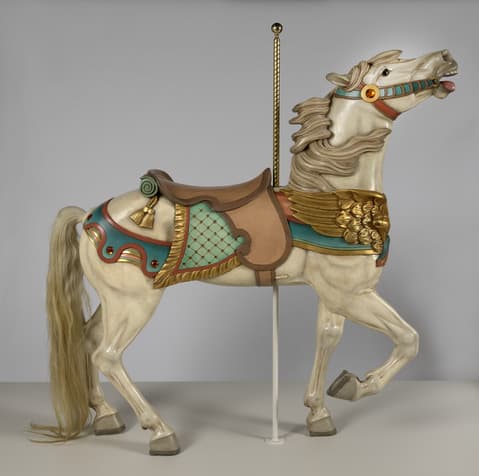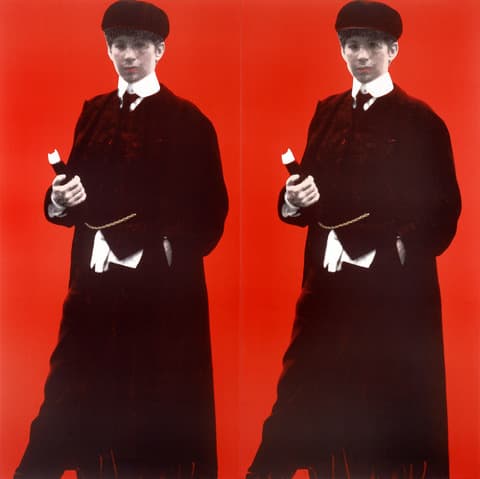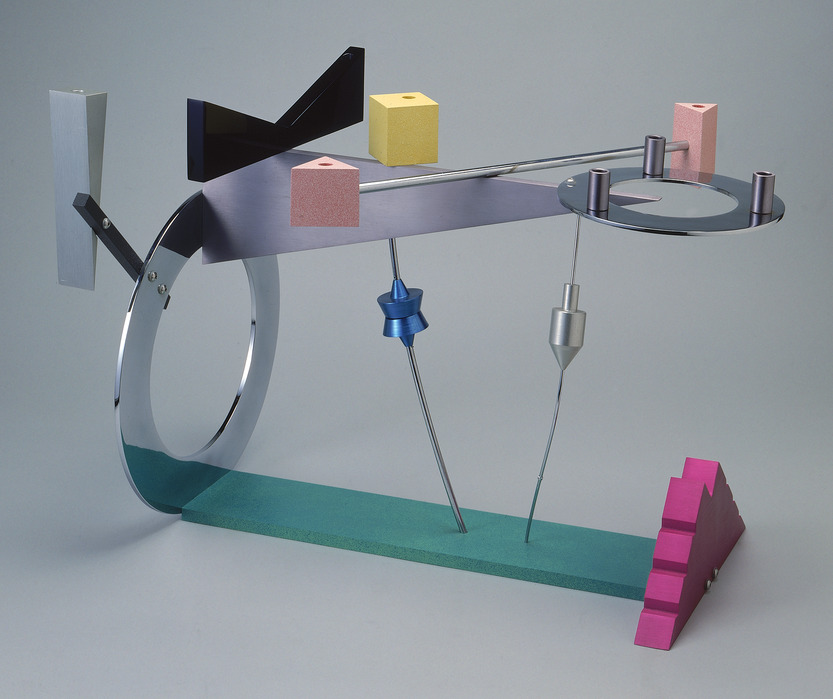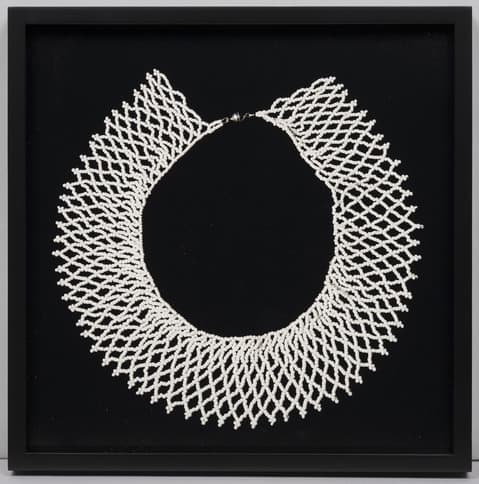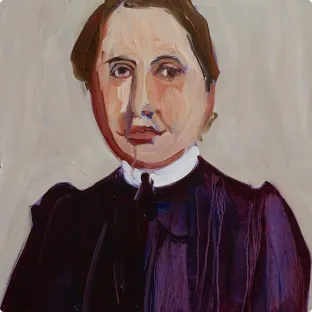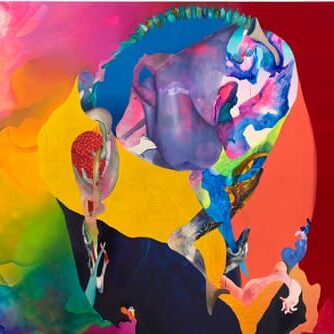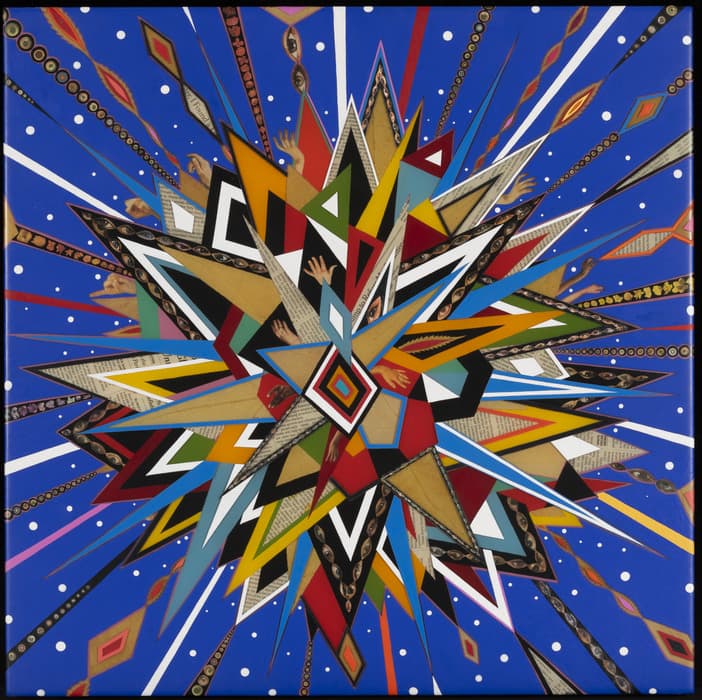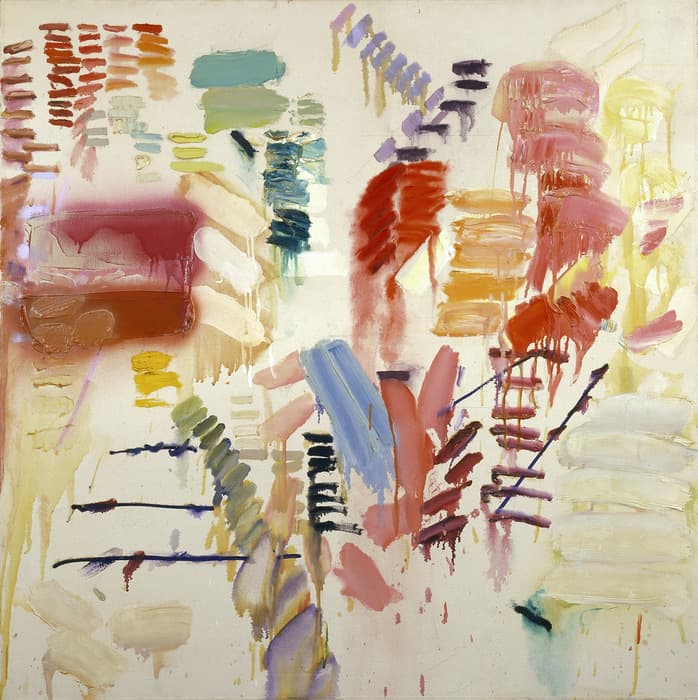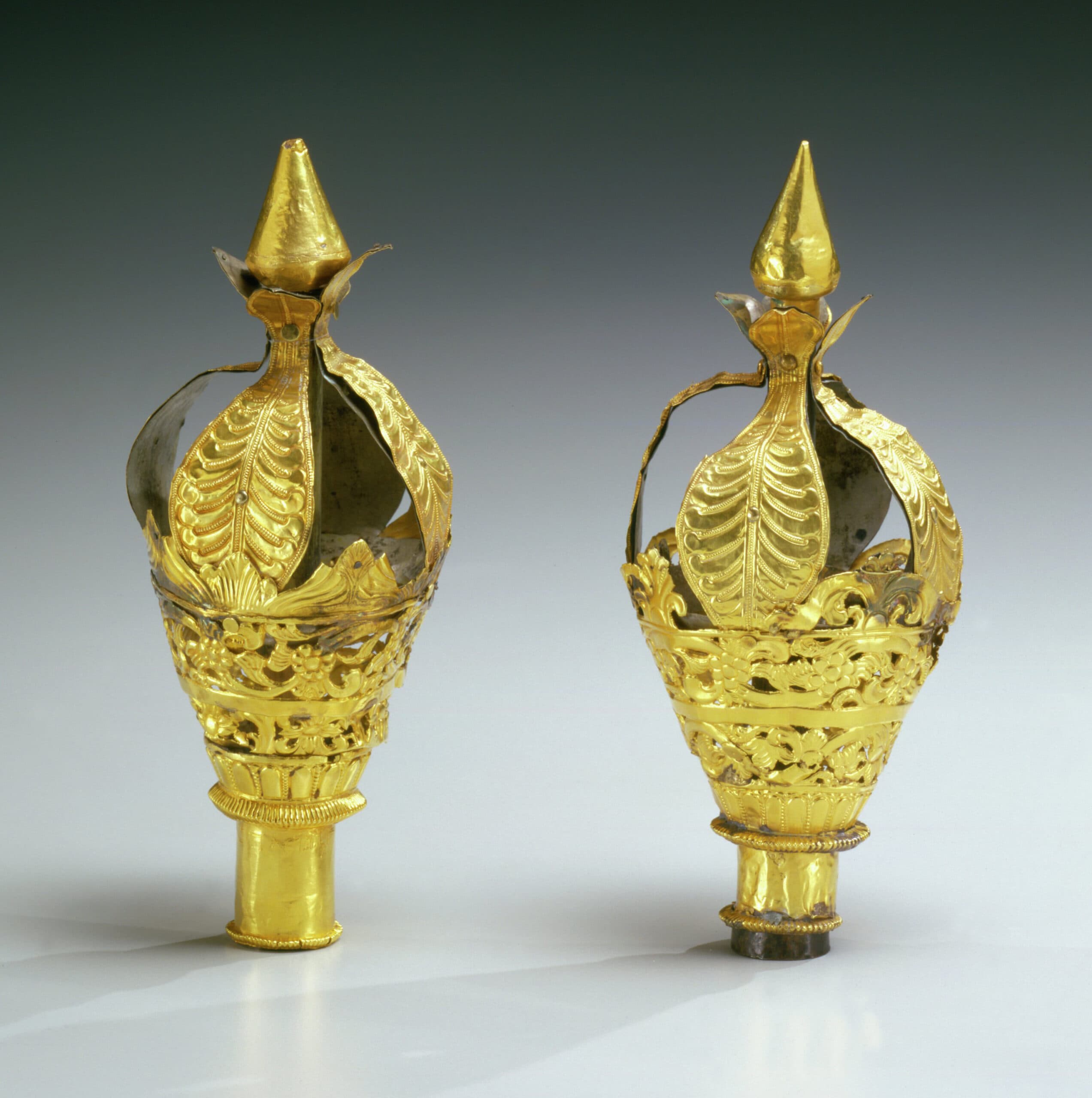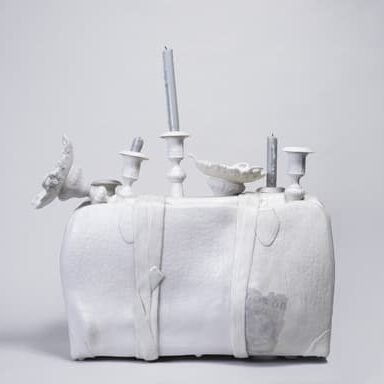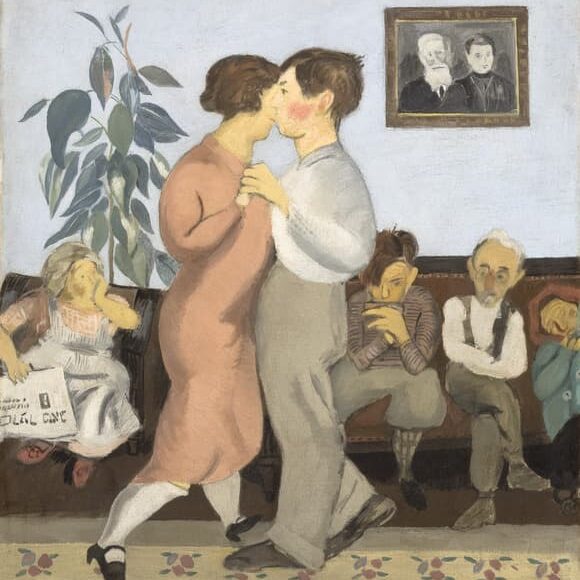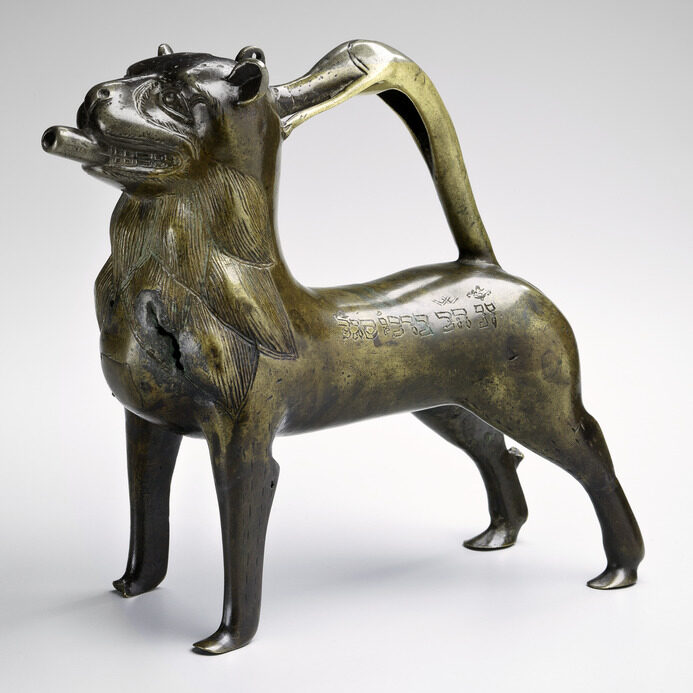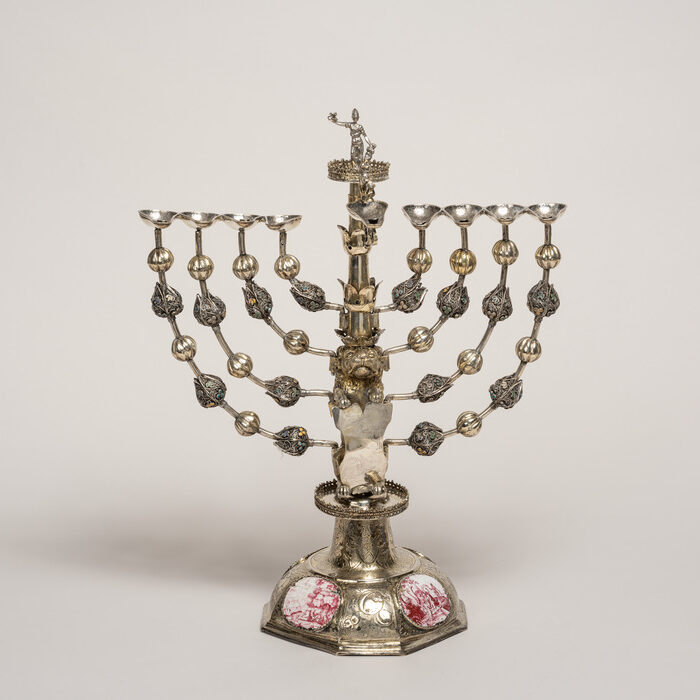Revolution of the Eye: Modern Art and the Birth of American Television
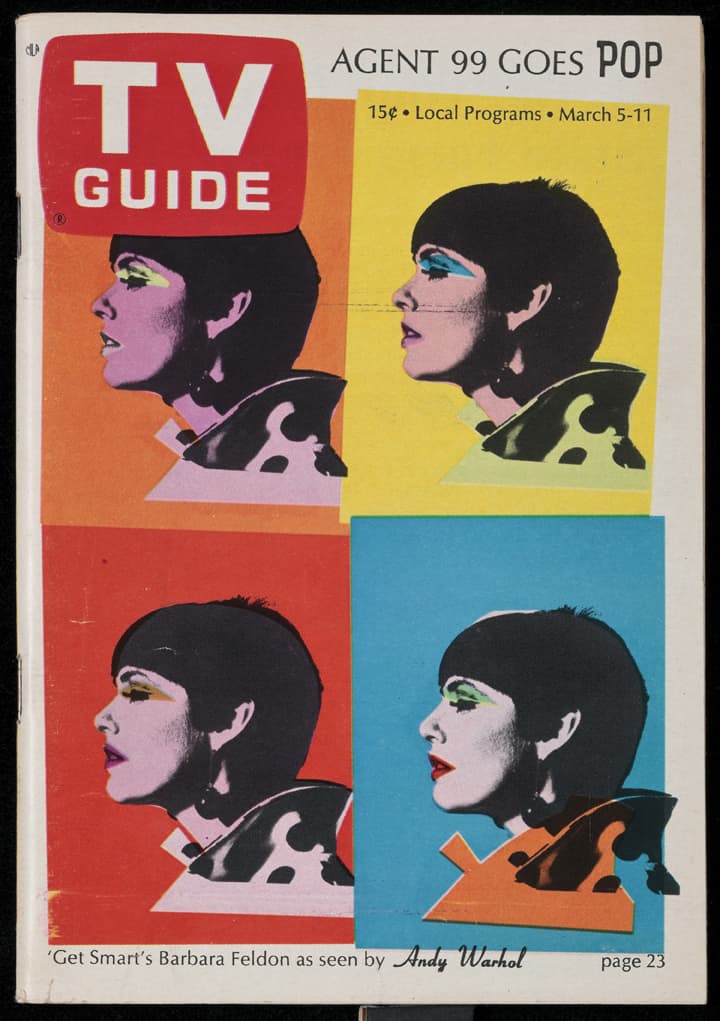
First Exhibition to Explore How Cutting-Edge Art and Design Influenced the Look and Content of Early Network Television
New York, NY – Revolution of the Eye: Modern Art and the Birth of American Television, the first exhibition to explore how avant-garde art influenced the look and content of network television in its formative years, is on view at the Jewish Museum from May 1, 2015 through September 27, 2015. From the late 1940s to the mid-1970s, the pioneers of American television – many of them young, Jewish, and aesthetically adventurous – adopted modernism as a source of inspiration. Revolution of the Eye looks at how the dynamic new medium of television, in its risk-taking and aesthetic experimentation, paralleled and embraced cutting-edge art and design.
The exhibition is organized by the Jewish Museum, New York, and the Center for Art, Design, and Visual Culture, University of Maryland, Baltimore County (UMBC). Following its New York showing, Revolution of the Eye: Modern Art and the Birth of American Television will travel to four other U.S. venues. Revolution of the Eye is curated by Dr. Maurice Berger, who has organized more than thirty exhibitions at national and international venues including the Whitney Museum of American Art, Smithsonian National Museum of American History, The New Museum, Studio Museum in Harlem, and the International Center of Photography, among others. Berger’s essay series, Race Stories, “a continuing exploration of the relationship of race to photographic portrayals of race,” appears monthly on the Lens blog of The New York Times.
Highlighting the visual revolution ushered in by American television and modernist art and design of the 1950s and 1960s, Revolution of the Eye features over 260 art objects, artifacts, and clips. Fine art and graphic design, including works by Saul Bass, Marcel Duchamp, Roy Lichtenstein, Man Ray, Georgia O'Keeffe, and Andy Warhol, as well as ephemera, television memorabilia, and clips from historic television programs and film, including Batman, The Ed Sullivan Show, The Ernie Kovacs Show, Rowan and Martin's Laugh-In, and The Twilight Zone will be on view.
Revolution of the Eye examines television's promotion of avant-garde ideals and aesthetics exemplified by the integration of Dada, Surrealism, and other experimental genres into the aesthetically and conceptually rich series The Twilight Zone and The Ernie Kovacs Show by such pioneers as Rod Serling and Ernie Kovacs. Both embraced avant-garde ideas that broached broad social or cultural issues – from the politics of the Cold War to the corporate ambitions of the networks. Their work was artful and sophisticated, exemplifying the best of early television. Their influential programs reflected the medium’s potential to alter the way Americans understood the world.
Revolution of the Eye illustrates how Pop Art sensibilities were appropriated on the Batman action series and the variety program, Rowan and Martin’s Laugh-In; Op Art influenced commercials including promotions for Kodak and Caprolan Nylon; and how Color Field and Op Art painting and Minimalist sculpture were embraced by set designers in the mid-1960s when the networks shifted to all-color formats, such as for The Ed Sullivan Show. It also features the medium’s first fully interactive program – Winky Dink and You. This groundbreaking children’s show invited youth to send away for plastic screens and special crayons, directing them to draw on their television sets to help move along the storyline.
The exhibition looks at television’s facility as a promotional platform for modern artists, designers, and critics; its role as a committed patron of the work of modern artists and designers; and as a medium whose relevance in contemporary culture was validated by the Museum of Modern Art's historic Television Project (1952-55) which worked with the networks to produce programs on modern art for a broad audience and apply modernist ideals to the look of television.
The exhibition also examines the revolutionary corporate advertising and promotional campaigns and title sequences for films and television series created by graphic designer Saul Bass, including virtually unknown opening credits for Playhouse 90, a bold title sequence for the NBC anthology series Profiles in Courage, and a dynamic campaign for IBM. The “New Advertising” revolution of the 1950s and 1960s, which ushered in one of the most creative periods of the medium in the United States, is highlighted, including Andy Warhol and Ben Shahn’s advertising and promotional campaigns for CBS.
Early on, television opened its doors to appearances by avant-garde artists – from John Cage performing a musical composition on I’ve Got a Secret to Salvador Dali as the mystery guest on What’s My Line. Revolution of the Eye examines the diverse ways modern artists, designers, and critics used the medium as a significant vehicle for self-promotion to a broad national audience. Viewers will experience rare clips of Cage, Dali, Willem de Kooning, Marcel Duchamp, Ray Eames, Roy Lichtenstein, Ben Shahn, George Segal, and other renowned artists.
Aline Bernstein Saarinen introduced a vast audience to modernist art, design, and museums. In 1963 she became the art and architecture editor and on-air critic of NBC’s Today and Sunday shows, the first such appointment on a national American television news program. Saarinen believed that the appreciation of art was not limited to insiders and cultural elites. Filmed stylishly, often with the flair of French New Wave cinema, Saarinen’s presentations were lucid, urbane, and informative, introducing millions of Americans to the art and architecture she supported.
Modern art and graphic design inspired television production and promotions. This inspiration was evident in a range of television practices, from set design and stagecraft to marketing and promotional campaigns. Revolution of the Eye features the progressive design campaign of the CBS Television Network as one of the most esteemed of any American corporation. CBS art directors William Golden and Lou Dorfsman created an innovative shift in shaping the company’s corporate identity, moving design away from self-expression to a public communication tool that stimulated interest in the network and its programming.
The final gallery in the exhibition is devoted to Andy Warhol. Warhol viewed television as an extension of his creative and political practice as an award-winning designer for CBS and NBC in the early 1950s, as a performer on network television programs and commercials, and as a cable-television producer. A highlight is the rarely seen, 1968 commercial, for Schrafft’s ice cream, directed by Warhol in the style of his countercultural movies, and titled The Underground Sundae.
Revolution of the Eye vividly presents the little-known story about the cultural and social context into which television was born and the direct influence of avant-garde artists on the formative years of a medium whose powerful impact on our lives remains pervasive.
“Many critics speak of present-day television as kind of a new golden age in which the medium is seen to have surpassed film as a major venue for artistic experimentation and quality,” says exhibition curator Maurice Berger. “Revolution of the Eye reminds us that the desire for outstanding, artistically important programming was in television’s DNA from the beginning,” he added.
Revolution of the Eye: Modern Art and the Birth of American Television is curated by Dr. Maurice Berger, Research Professor and Chief Curator, Center for Art, Design and Visual Culture, UMBC, and curator, National Jewish Archive of Broadcasting, The Jewish Museum, New York.
National Exhibition Tour: The Jewish Museum, New York City (5/1/15-9/27/15); NSU Art Museum Fort Lauderdale, FL (10/24/15-2/28/16); The Addison Gallery of American Art, Andover, MA (4/9/16-7/31/16); and Center for Art, Design, and Visual Culture, University of Maryland, Baltimore County (UMBC) (9/29//16-12/10/167).
Exhibition Catalogue
In conjunction with the exhibition, the Jewish Museum, New York City, and the Center for Art, Design and Visual Culture, University of Maryland, Baltimore County, are publishing a 156-page catalogue by Maurice Berger with an introduction by Lynn Spigel, in association with Yale University Press. Featuring 66 color and 100 black-and-white illustrations, the hardcover book is available worldwide and at the Jewish Museum’s Cooper Shop for $45.00.
Microsite
A microsite for Revolution of the Eye offers visitors an interactive preview of the exhibition, featuring a dynamic online survey that investigates visitors' personal relationship to art, television, and leisure time. The survey also tests existing knowledge of early network television and modern art. A fun and intriguing experience, the survey, accessed at reveye.thejewishmuseum.org, enables visitors to share their opinions while engaging with exhibition content.
Public Programs
A series of exhibition related screenings, gallery talks, and conversations will be presented in collaboration with other institutions around New York City including The Whitney Museum of American Art and the Herb Lubalin Study Center of Design and Typography at Cooper Union. At the Jewish Museum, two highlights include: a May 14 concert by the Bang on a Can All-Stars highlighting the relationship between music and image, and a May 28 conversation between two prominent scholars of television history, Horace Newcomb and Lynn Spigel. Additional programs will take place during the run of the Revolution of the Eye exhibition.
Support
Revolution of the Eye: Modern Art and the Birth of American Television is made possible by the generous support of the Andy Warhol Foundation for the Visual Arts, the Stern Family Philanthropic Foundation, the National Endowment for the Humanities: Celebrating 50 Years of Excellence, the National Endowment for the Arts, an anonymous donation in memory of Curtis Hereld, and HBO.
Endowment support is provided by The Skirball Fund for American Jewish Life Exhibitions and the Neubauer Family Foundation.
The Revolution of the Eye: Modern Art and the Birth of American Television microsite is supported by the National Endowment for the Humanities.
About the Center for Art, Design, and Visual Culture, University of Maryland, Baltimore County (UMBC)
The Center for Art, Design and Visual Culture (CADVC) at UMBC is dedicated to organizing comprehensive exhibitions, the publication of catalogs, CDs, DVDs, and books on the arts, and educational and community outreach projects. The CADVC maintains a 4,200 square-foot museum space dedicated to the exhibition of art and design, moving images, and material culture; many of its exhibitions have toured nationally and internationally to major venues. The Center's programs serve as a forum for exploring the social and aesthetic issues of the day. The Center is committed to rethinking the relationship between art institutions and the public, placing special emphasis on well-written, viewer-friendly catalog and wall texts, rigorously documented and researched catalogs, lucid application of cultural and social theory to build connections between visual culture and the society at large, and creative exhibition and publication design.
The CADVC offers extensive educational outreach initiatives and publication programs, often in partnership with a variety of educational and cultural institutions. Disciplines represented through its exhibitions, public programming, and/or publications include painting, sculpture, drawing, printmaking, photography, graphic design, imaging and digital art, video, film, installation, and performance art, as well as advertising, television, industrial design, architecture, critical theory, art education theory, and the study of art history and criticism. Further information is at http://www.umbc.edu/cadvc.
Press contacts
Anne Scher or Alex Wittenberg
The Jewish Museum
212.423.3271 or [email protected]
Tom Moore
Center for Art, Design, and Visual Culture, UMBC
410.455.3370 or [email protected]
Andrea Schwan
Andrea Schwan Inc.
917.371.5023 or [email protected]
